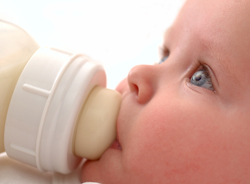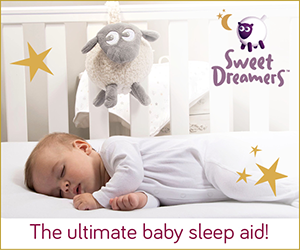Bottle Feeding: How much? How warm?

Bottle-feeding can be something you choose do from Day 1 or something you only begin when you go back to work. Most of us with kids have used bottles at some point or other.
I breastfed my babies for different amounts of times and then moved on to bottles. The transition was hard for them, that is, for the girls. My son was always hungry and didn’t care where it came from! The girls weren’t interested, which made it hard for both of us. But we got there using different tricks including only putting water in the bottle to get them used to the idea of a rubber nipple (the one-step-at-a-time approach), serving formula at room temperature rather than warm, me not giving them the bottle or being in the room etc. Once we made the transition however, it was hard to break the bottle routine!
I did have my share of questions when it came to bottle-feeding: How much? How warm? Sterilizing or not? What kind of water? What kind of formula? Etc.
Here are a couple of those Questions & Answers found in the chapter Bottle Feeding in my book Babies 0-6 months.
How much formula does my baby need?
Follow the exact instructions on the formula box. Diluting too much can make the baby sick and not gain weight, too concentrated can also be bad for the baby as it can cause dehydration and electrolyte imbalances. There are guidelines on the box with regards to size and age of baby but generally a newborn needs 1,5-3oz (45-90ml) every 2-3 hours. As he gets bigger, the amount should increase, peaking at about 24-32oz (720-950ml) a day for a 6 month old. Don’t worry if your baby doesn’t finish the bottle. (Just keep a good eye on the number of full wet diapers – a minimum of 4-6 every 24 hours).
How warm does the formula need to be?
Formula should be used with water that’s 20°C or 68°F. You can warm it up by placing the bottle of formula in hot water for up to 15 min but don’t let it boil. With my first baby I followed the “rules”; after him, I just started using warm water to make the formula rather than heating it up separately. There are a number of electric bottle warmers on the market now that will warm up your bottle to perfect temperature in just minutes. You can test the warmth by dripping a bit of milk on your wrist. It should feel warm not hot. If you don’t have time to heat it up, your baby might be happy with room temperature milk, which is fine. Also, don’t use the microwave to heat up the milk, as it’s more likely to cause burns.
Lianne is a Canadian mother of 4, entrepreneur and author of Lianne’s Quick Guide – for the busy woman. Her first title is called Babies 0-6 months and can be purchased directly from her website: www.liannesquickguide.com. She lives & works just outside of Amsterdam and can usually be found biking around on her bicycle built for 6.
You can follow her on facebook and on twitter.





